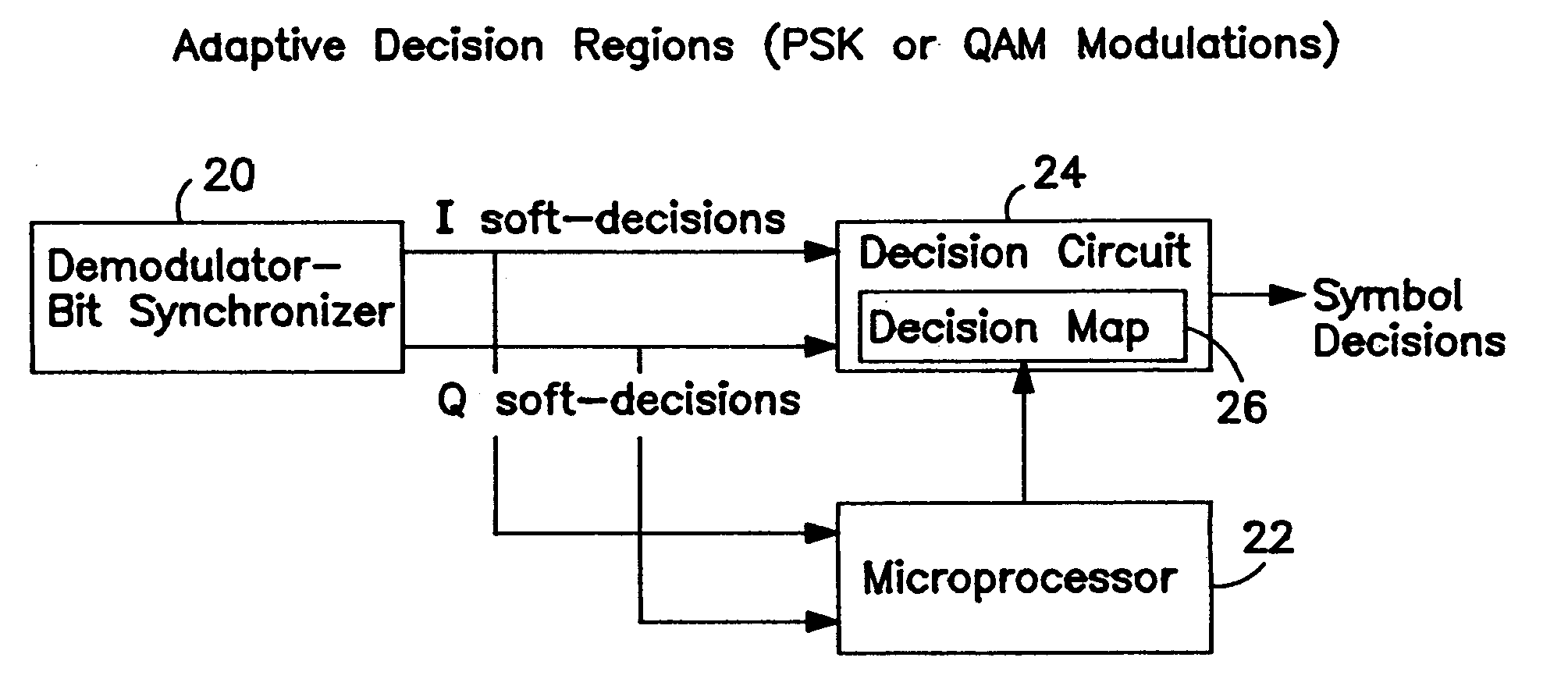Adaptive decision regions and metrics
a technology of adaptive decision regions and metrics, applied in the field of demodulator and demodulator, can solve problems such as amplifier non-linearity, demodulator imperfections, and system performance degradation of ber performan
- Summary
- Abstract
- Description
- Claims
- Application Information
AI Technical Summary
Benefits of technology
Problems solved by technology
Method used
Image
Examples
Embodiment Construction
[0027]The present invention relates to a demodulator and a method for demodulating which improves the bit error rate (BER) for both hard-decision decoding techniques, such as quadrature phase shift keying (QPSK), 8PSK, 12 / 4 quadrature amplitude modulation (QAM), 16-QAM and 32-QAM as well as soft-decision decoding techniques, such as Viterbi decoding and trellis decoding. As discussed above, hard-decision detection techniques generally operate by determining the decision region in which the received signal is located. In soft-decision detection techniques, such as Viterbi decoding and trellis decoding, a decision metric which is the distance between the symbol and a reference constellation, is computed. In both hard-decision and soft-decision decoding techniques, various errors can result as a result of modulator imperfections, channel filtering, amplifier non-linearities as well as demodulator imperfections. In order to optimize the bit error rate (BER) for hard-decision decoding te...
PUM
 Login to View More
Login to View More Abstract
Description
Claims
Application Information
 Login to View More
Login to View More - R&D
- Intellectual Property
- Life Sciences
- Materials
- Tech Scout
- Unparalleled Data Quality
- Higher Quality Content
- 60% Fewer Hallucinations
Browse by: Latest US Patents, China's latest patents, Technical Efficacy Thesaurus, Application Domain, Technology Topic, Popular Technical Reports.
© 2025 PatSnap. All rights reserved.Legal|Privacy policy|Modern Slavery Act Transparency Statement|Sitemap|About US| Contact US: help@patsnap.com



